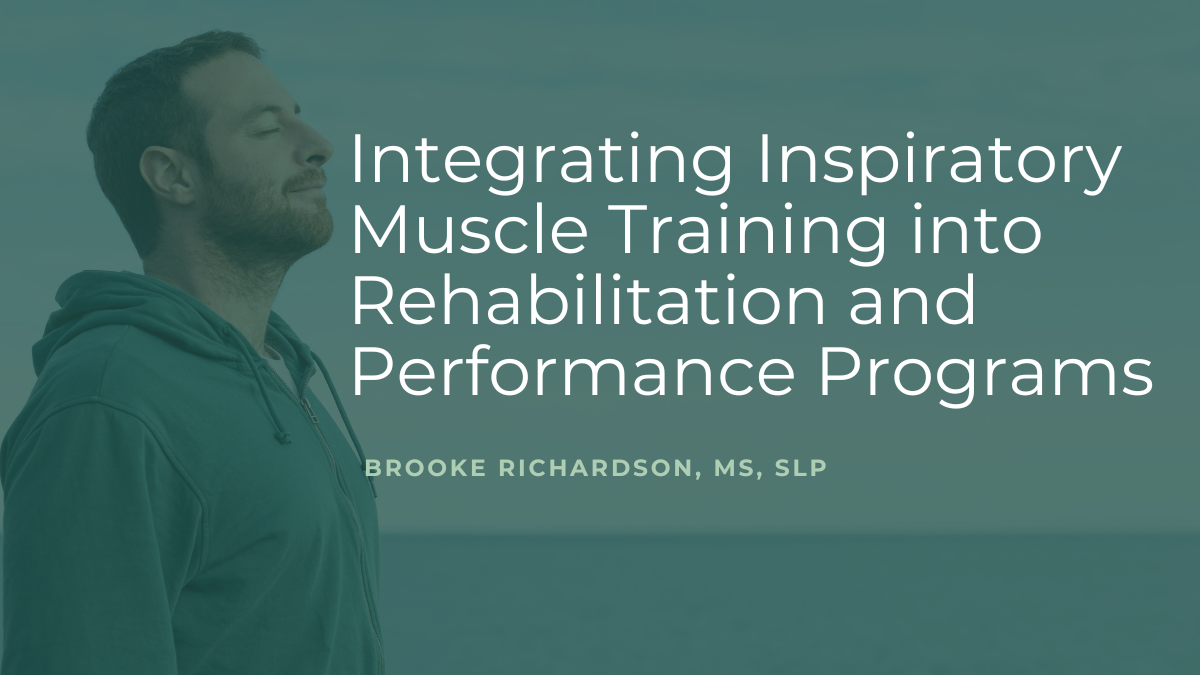Integrating Inspiratory Muscle Training into Rehabilitation and Performance Programs

Inspiratory muscle training (IMT) has moved beyond specialty respiratory therapy and into mainstream rehab and performance settings.
Integrating Inspiratory Muscle Training into Rehabilitation and Performance Programs
Introduction
Once considered niche, inspiratory muscle training (IMT) is now a well-supported intervention in both rehabilitation and performance settings. Research shows it can improve maximal inspiratory pressure (MIP), delay breathing fatigue, and enhance patient and athlete outcomes when applied correctly.
Physiological Rationale
Breathing against resistance, through inspiratory muscle training (IMT), improves:
-
Maximal inspiratory pressure (MIP) for inspiratory force production
-
Endurance of inspiratory muscles for sustained activity
Ventilatory efficiency during exercise or daily tasks
- Perception of dyspnea or breathing difficulty
Evidence-Based Applications of Inspiratory Muscle Training
- Pulmonary Rehabilitation
- COPD, ILD, and post-thoracic surgery recovery
- Reduces dyspnea, increases exercise tolerance
-
Improves ventilatory efficiency, supports higher training loads
-
Maintains respiratory function in ALS, muscular dystrophy
-
Delays ventilatory fatigue
-
Improves recovery and performance metrics in endurance and high-intensity sport
Programming Guidelines for Inspiratory Muscle Training
-
Baseline: Assess MIP to determine load (often train at 30–75% of max)
Duration / intensity: 5–15 minutes / session, or 30 repetitions / session, once a day
-
Frequency: 5 days/week
Progression: Increase load as MIP (strength) improves
Practical Considerations
Match device type to the individual including their strength, medical history, and goals
-
Emphasize proper technique for effectiveness and safety
Track adherence and measurable results
This article is not medical advice.
Related Reading:
Categories: : IMT, RMT basics
 Brooke Richardson
Brooke Richardson 